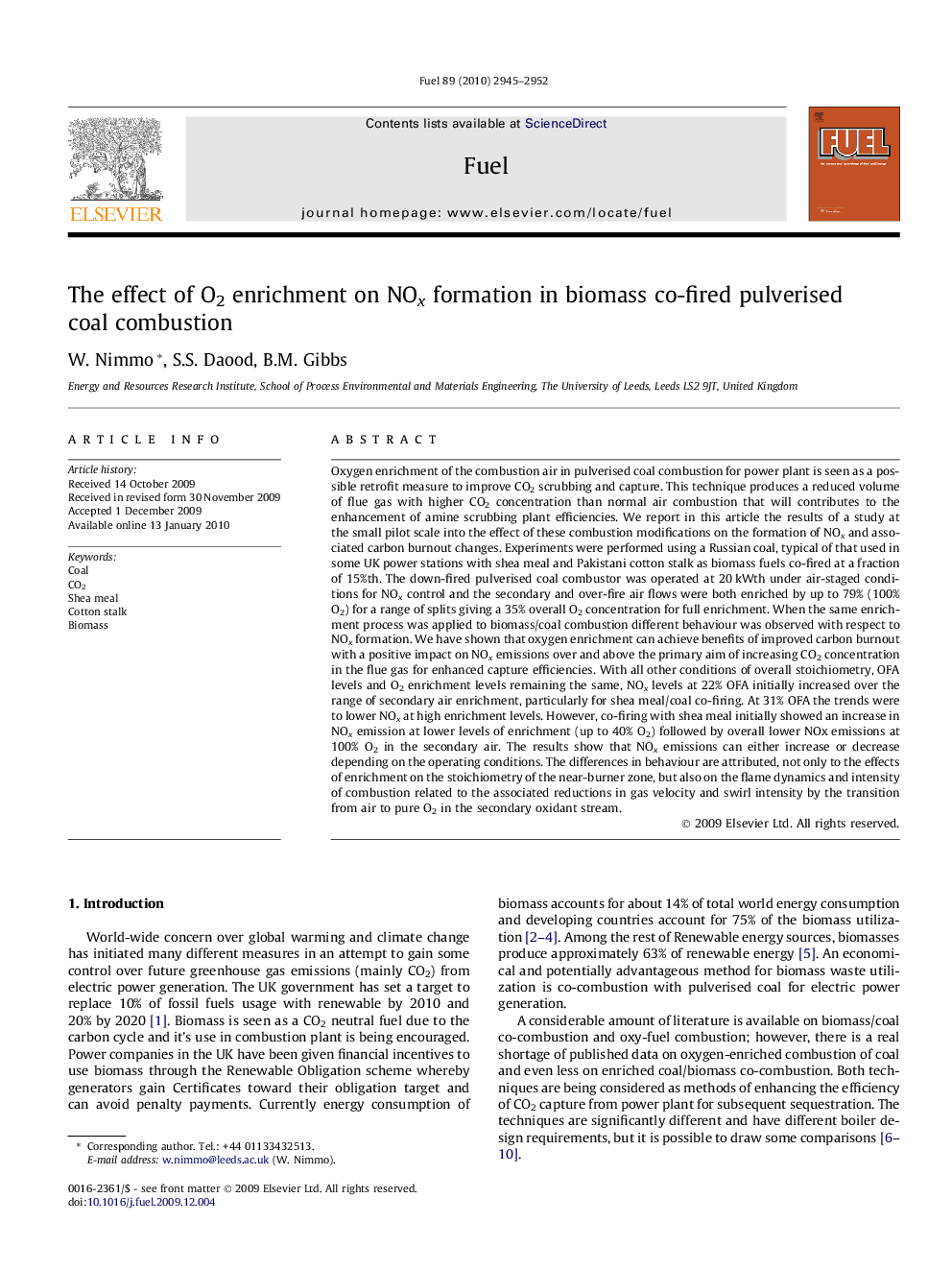| کد مقاله | کد نشریه | سال انتشار | مقاله انگلیسی | نسخه تمام متن |
|---|---|---|---|---|
| 206560 | 461192 | 2010 | 8 صفحه PDF | دانلود رایگان |

Oxygen enrichment of the combustion air in pulverised coal combustion for power plant is seen as a possible retrofit measure to improve CO2 scrubbing and capture. This technique produces a reduced volume of flue gas with higher CO2 concentration than normal air combustion that will contributes to the enhancement of amine scrubbing plant efficiencies. We report in this article the results of a study at the small pilot scale into the effect of these combustion modifications on the formation of NOx and associated carbon burnout changes. Experiments were performed using a Russian coal, typical of that used in some UK power stations with shea meal and Pakistani cotton stalk as biomass fuels co-fired at a fraction of 15%th. The down-fired pulverised coal combustor was operated at 20 kWth under air-staged conditions for NOx control and the secondary and over-fire air flows were both enriched by up to 79% (100% O2) for a range of splits giving a 35% overall O2 concentration for full enrichment. When the same enrichment process was applied to biomass/coal combustion different behaviour was observed with respect to NOx formation. We have shown that oxygen enrichment can achieve benefits of improved carbon burnout with a positive impact on NOx emissions over and above the primary aim of increasing CO2 concentration in the flue gas for enhanced capture efficiencies. With all other conditions of overall stoichiometry, OFA levels and O2 enrichment levels remaining the same, NOx levels at 22% OFA initially increased over the range of secondary air enrichment, particularly for shea meal/coal co-firing. At 31% OFA the trends were to lower NOx at high enrichment levels. However, co-firing with shea meal initially showed an increase in NOx emission at lower levels of enrichment (up to 40% O2) followed by overall lower NOx emissions at 100% O2 in the secondary air. The results show that NOx emissions can either increase or decrease depending on the operating conditions. The differences in behaviour are attributed, not only to the effects of enrichment on the stoichiometry of the near-burner zone, but also on the flame dynamics and intensity of combustion related to the associated reductions in gas velocity and swirl intensity by the transition from air to pure O2 in the secondary oxidant stream.
Journal: Fuel - Volume 89, Issue 10, October 2010, Pages 2945–2952